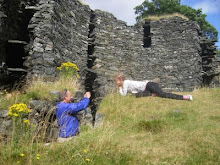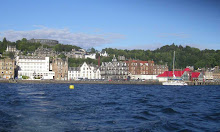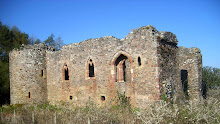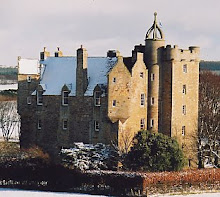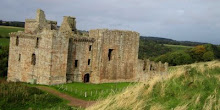Today is an ideal Guy Fawkes Day - clear, crisp and a Saturday. There will be fireworks throughout the United Kingdom tonight and massive bonfires topped with a 'guy', a stuffed effigy of Guy Fawkes who, on 5 November 1605, hoped to make a bonfire of the Houses of Parliament thereby killing the king.
The king in question was King James VI of Scotland (right), son of Mary Queen of Scots, and recently crowned James I of England. Guy Fawkes and his co-conspirators were aggrieved that James, a Protestant (albeit with a Roman Catholic mother and wife) was not resisting anti-Catholic legislation.
The story twists and turns and is well told
here and
here. In essence the plot was that with the king and his elder son dead, his nine year old daughter Elizabeth would become Queen of a newly Catholic country. Well, Fawkes was discovered on 4 November and Elizabeth grew up to marry the German Frederick V, Elector Palatinate. For just a few months in the winter of 1619/1620 Frederick became King of Bohemia, and known as 'The Winter King'; thus Elisabeth acquired her moniker 'Winter Queen'.
Elisabeth, who was born in
Falkland Palace in Fife and brought up at
Linlithgow Palace near Edinburgh, would surely have considered herself a Scot; her portrait hangs in the
Scottish National Portrait Gallery. It is therefore doubly ironic that Elizabeth whom Guy Fawkes wished to crown as a Catholic Queen is remembered principally as the Grandmother of George I, who was preferred to the Cathoic James Stuart, the exiled
de jure king, when Queen Anne died in 1714. George, a Protestant, became the first monarch of the House of Hanover, leapfrogging more than 50 Roman Catholics who had a better claim to the throne! There followed 32 years of Jacobite Risings, seeking to right this perceived wrong.
Elizabeth died in England, whilst visiting her nephew Charles II who was fond of her and insisted that some of the 'barbarous' names in his new territories across the Atlantic were named after her, hence the Elizabeth River in Southeastern Virginia and Cape Elizabeth in Maine.
Happy Guy Fawkes Day!













































